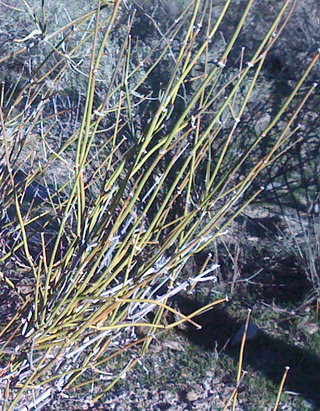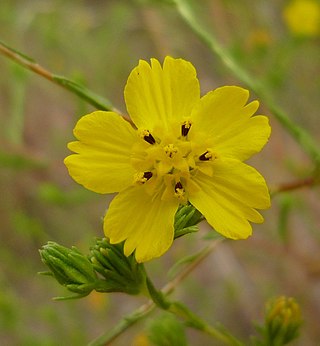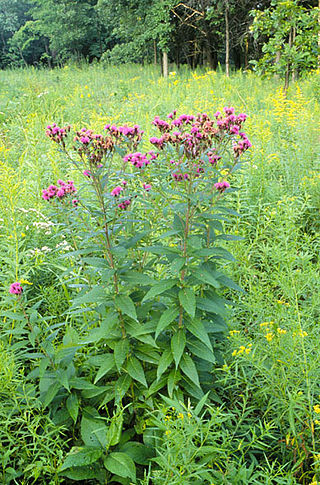
The adrenal cortex is the outer region and also the largest part of the adrenal gland. It is divided into three separate zones: zona glomerulosa, zona fasciculata and zona reticularis. Each zone is responsible for producing specific hormones. It is also a secondary site of androgen synthesis.

The zona fasciculata constitutes the middle and also the widest zone of the adrenal cortex, sitting directly beneath the zona glomerulosa. Constituent cells are organized into bundles or "fascicles".

The long-tailed porcupine is a species of rodent in the family Hystricidae. It is monotypic within the genus Trichys, and is found in Brunei, Indonesia, and Malaysia.

Prunus fasciculata, also known as wild almond, desert almond, or desert peach is a spiny and woody shrub producing wild almonds, which is native to western deserts of North America.

Ephedra fasciculata is a species of plant in the Ephedraceae family. Common names are Arizona ephedra, Arizona jointfir, and desert Mormon-tea.

Chamaecrista fasciculata, the partridge pea, is a species of legume native to most of the eastern United States. It is an annual which grows to approximately 0.5 meters tall. It has bright yellow flowers from early summer until first frost, with flowers through the entire flowering season if rainfall is sufficient.

Tillandsia fasciculata, commonly known as the giant airplant, giant wild pine, or cardinal airplant, is a species of bromeliad that is native to Central America, Mexico, the West Indies, northern South America, and the southeastern United States. Within the United States, this airplant is at risk of extirpation from the Mexican bromeliad weevil, Metamasius callizona. A related plant, Tillandsia utriculata, sometimes called the "wild pine", is endemic to the same areas.

Deinandra fasciculata, known by the common names clustered tarweed and fascicled spikeweed, is a species of flowering plant in the family Asteraceae native to western North America.

Batrachorhina is a genus of longhorn beetles of the subfamily Lamiinae, containing the following species:
Batrachorhina niveoscutellata is a species of beetle in the family Cerambycidae. It was described by Stephan von Breuning in 1940.
Batrachorhina postmaculata is a species of beetle in the family Cerambycidae. It was described by Stephan von Breuning in 1957. It is known from Madagascar.
Batrachorhina similis is a species of beetle in the family Cerambycidae. It was described by Stephan von Breuning in 1938.
Batrachorhina albovaria is a species of beetle in the family Cerambycidae. It was described by Stephan von Breuning in 1942. It is known from Madagascar.
Batrachorhina strandi is a species of beetle in the family Cerambycidae. It was described by Stephan von Breuning in 1938. It is known from Madagascar.
Batrachorhina approximata also known as lamiines or flat-faced longhorned beetle, is a species of beetle in the family Cerambycidae. It was described by Stephan von Breuning in 1940. It is known from Kenya.
Batrachorhina tanganjicae is a species of beetle in the family Cerambycidae. It was described by Stephan von Breuning in 1961. It is known from Tanzania. Batrachorhina is a genus of longhorn beetles.
Batrachorhina distigma is a species of beetle in the family Cerambycidae. It was described by Léon Fairmaire in 1893, originally under the genus Praonetha. It is known from Comoros.
Batrachorhina lactaria is a species of beetle in the family Cerambycidae. It was described by Léon Fairmaire in 1894. It is known from Madagascar.
Batrachorhina vulpina is a species of beetle in the family Cerambycidae. It was described by Johann Christoph Friedrich Klug in 1833, originally under the genus Saperda. It is known from Réunion and Mauritius.

Vernonia fasciculata, the smooth ironweed or common ironweed, or prairie ironweed is a species of perennial plant in the family Asteraceae. It is native to Manitoba in Canada and the north-central U.S.A.









